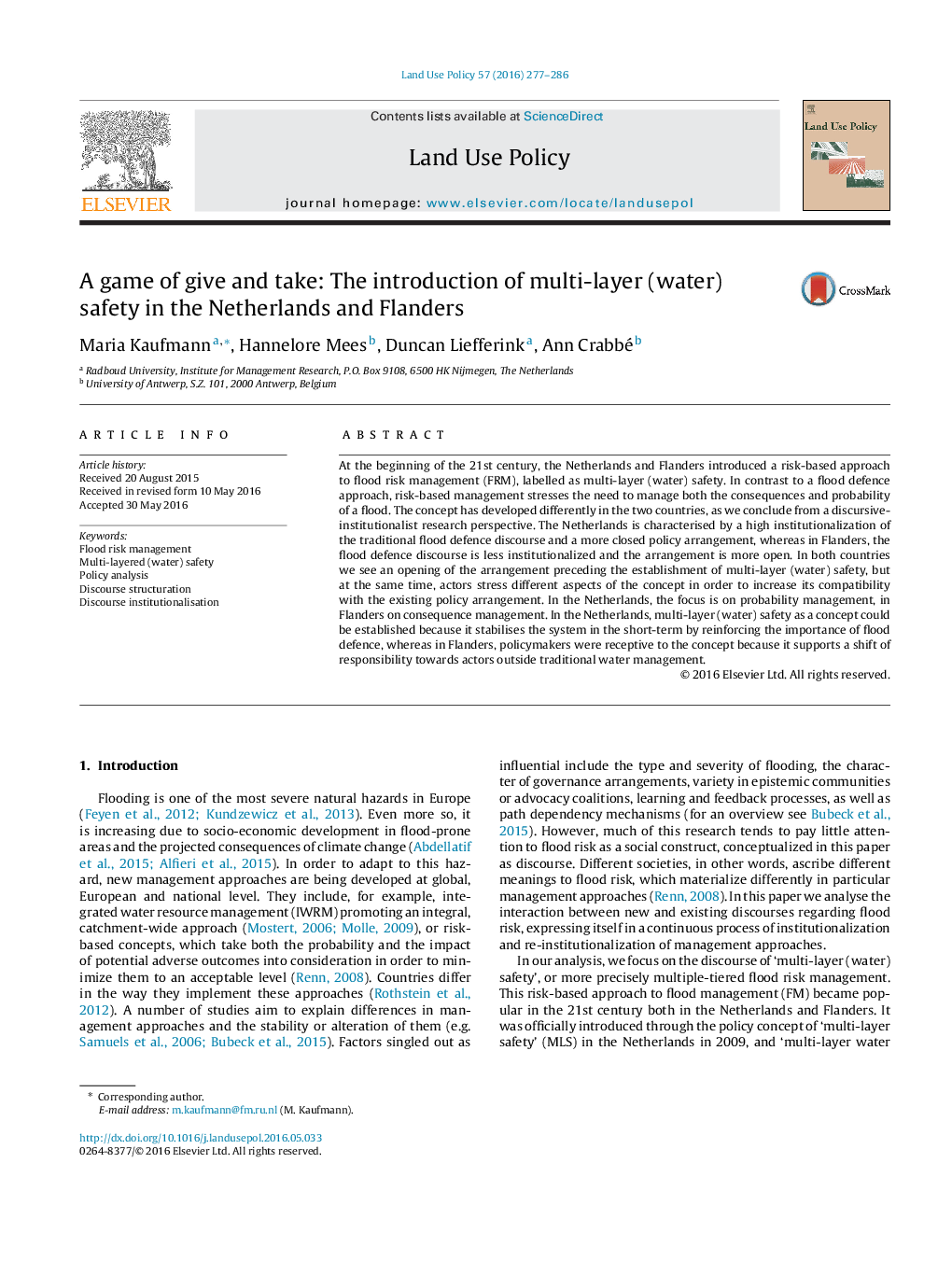| Article ID | Journal | Published Year | Pages | File Type |
|---|---|---|---|---|
| 6547019 | Land Use Policy | 2016 | 10 Pages |
Abstract
At the beginning of the 21st century, the Netherlands and Flanders introduced a risk-based approach to flood risk management (FRM), labelled as multi-layer (water) safety. In contrast to a flood defence approach, risk-based management stresses the need to manage both the consequences and probability of a flood. The concept has developed differently in the two countries, as we conclude from a discursive-institutionalist research perspective. The Netherlands is characterised by a high institutionalization of the traditional flood defence discourse and a more closed policy arrangement, whereas in Flanders, the flood defence discourse is less institutionalized and the arrangement is more open. In both countries we see an opening of the arrangement preceding the establishment of multi-layer (water) safety, but at the same time, actors stress different aspects of the concept in order to increase its compatibility with the existing policy arrangement. In the Netherlands, the focus is on probability management, in Flanders on consequence management. In the Netherlands, multi-layer (water) safety as a concept could be established because it stabilises the system in the short-term by reinforcing the importance of flood defence, whereas in Flanders, policymakers were receptive to the concept because it supports a shift of responsibility towards actors outside traditional water management.
Keywords
Related Topics
Life Sciences
Agricultural and Biological Sciences
Forestry
Authors
Maria Kaufmann, Hannelore Mees, Duncan Liefferink, Ann Crabbé,
